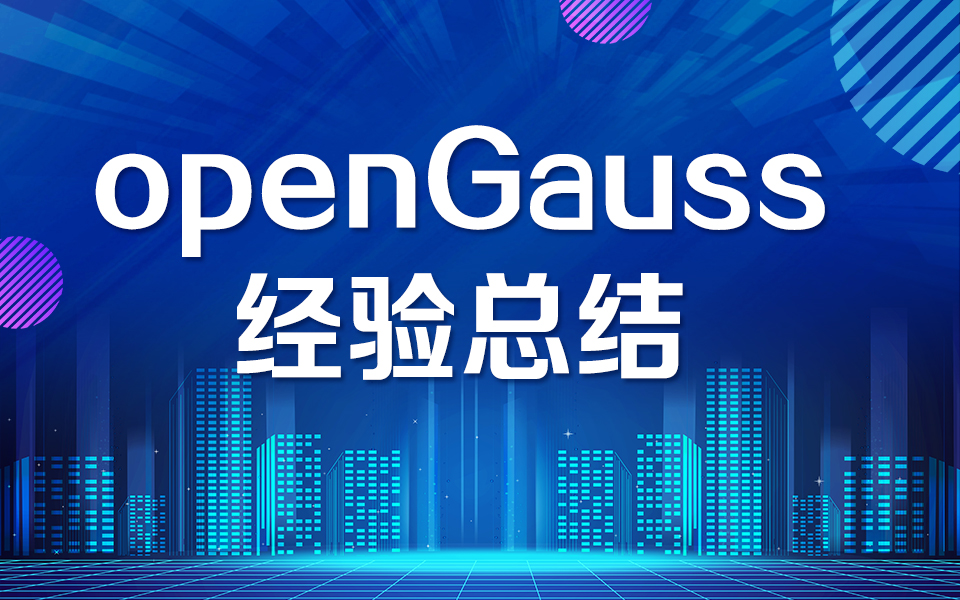android gone动画_Android动画(四):淡入淡出、翻牌、揭露动画
笔者已将本节的代码上传至 Github,大家可以结合着学习。以下内容是对官方文档的翻译。当你在使用APP时,如果立即从旧的内容切换到新内容,则很容易让用户感到不适,所以我们需要转场动画来平滑地过渡这种新旧内容的切换过程。有三种常用的动画适合该场景,他们分别是淡入淡出动画、翻牌动画、揭露动画。淡入淡出动画淡入淡出动画顾名思义是在一个 View 或者 ViewGroup 消失时,另外一个View同步显
笔者已将本节的代码上传至 Github,大家可以结合着学习。以下内容是对官方文档的翻译。
当你在使用APP时,如果立即从旧的内容切换到新内容,则很容易让用户感到不适,所以我们需要转场动画来平滑地过渡这种新旧内容的切换过程。
有三种常用的动画适合该场景,他们分别是淡入淡出动画、翻牌动画、揭露动画。
淡入淡出动画
淡入淡出动画顾名思义是在一个 View 或者 ViewGroup 消失时,另外一个View同步显示的动画。本节采用ViewPropertyAnimator实现淡入淡出动画,从Android 3.1 (API level 12)开始支持 ViewPropertyAnimator。
这是一个使用淡入淡出动画的例子。
创建views
首先,你需要创建两个你需要使用淡入淡出动画的 View。下面创建了一个进度指示 View 和一个可滑动的文本 View:1
2
3
4
5
6
7
8
9
10
11
12
13
14
15
16
17
18
19
20
21
22
23
24
25
26
27
android:layout_width="match_parent"
android:layout_height="match_parent">
android:id="@+id/content"
android:layout_width="match_parent"
android:layout_height="match_parent">
style="?android:textAppearanceMedium"
android:lineSpacingMultiplier="1.2"
android:layout_width="match_parent"
android:layout_height="wrap_content"
android:text="@string/lorem_ipsum"
android:padding="16dp" />
android:id="@+id/loading_spinner"
style="?android:progressBarStyleLarge"
android:layout_width="wrap_content"
android:layout_height="wrap_content"
android:layout_gravity="center" />
创建淡入淡出动画
分为3个步骤:
1、创建成员变量以便接下来对其添加动画。
2、对于将要淡入的 View,提前将 visibility 属性设置为GONE。这不仅能够避免该 View 在动画开始之前占用 layout 空间,同时也避免了不必要的 layout 计算。
3、预先保存config_shortAnimTime属性值。这个属性值表示标准的短暂动画时长,这个时长是很理想的数值对于频繁使用的动画来说。除此之外,还有config_longAnimTime和config_mediumAnimTime可供选择。
下面的代码使用了之前创建的 layout 作为活动的 content view:1
2
3
4
5
6
7
8
9
10
11
12
13
14
15
16
17
18
19
20
21
22
23
24
25public class CrossfadeActivity extends Activity {
private View contentView;
private View loadingView;
private int shortAnimationDuration;
...
@Override
protected void onCreate(Bundle savedInstanceState) {
super.onCreate(savedInstanceState);
setContentView(R.layout.activity_crossfade);
contentView = findViewById(R.id.content);
loadingView = findViewById(R.id.loading_spinner);
// Initially hide the content view.
contentView.setVisibility(View.GONE);
// Retrieve and cache the system's default "short" animation time.
shortAnimationDuration = getResources().getInteger(
android.R.integer.config_shortAnimTime);
}
...
}
添加淡入淡出动画
最后,我们要实现淡入淡出动画还需要如下3个步骤:
1、对于将要淡入的 View,设置它的 alpha 属性为0并且设置 visiblity 为VISIBLE(该 View 之前的 visibility 为GONE)。这一步让该 View 处于可见但完全透明的状态。
2、对将要淡入的view,让它的透明度从0变化到1。对于将要淡出的view,让它的透明度从1到0。
3、在Animator.AnimatorListener的onAnimationEnd()方法中设置淡出view 的 visibility 属性为GONE。注意,虽然该 View 已经完全透明,但是设置属性 visibility 为GONE不仅可以阻止该 View 占用 layout 空间,同时还避免了不必要的 layout 计算。
下面是这几步的例子:1
2
3
4
5
6
7
8
9
10
11
12
13
14
15
16
17
18
19
20
21
22
23
24public class CrossfadeActivity extends Activity {
private View contentView;
private View loadingView;
private int shortAnimationDuration;
...
private void crossfade() {
contentView.setAlpha(0f);
contentView.setVisibility(View.VISIBLE);
contentView.animate()
.alpha(1f)
.setDuration(shortAnimationDuration)
.setListener(null);
loadingView.animate()
.alpha(0f)
.setDuration(shortAnimationDuration)
.setListener(new AnimatorListenerAdapter() {
@Override
public void onAnimationEnd(Animator animation) {
loadingView.setVisibility(View.GONE);
}
});
}
}
翻牌动画
该动画适用于在两个 View 之间实现类似翻牌的动效。本节的翻牌动画借助了FragmentTransaction类的setCustomAnimations方法,该类从 Android3.0(API等级11) 开始可以调用。当然,你也可以借助其他的方式实现咯。
创建Animator object
为了创建翻牌动画,你一共需要四个 animators。两个分别控制前面的内容(卡片正面)从左边翻出和从左边翻入。同时需要两个 animators 分别控制后面的内容(卡片反面)从右边翻入和右边翻出。
card_flip_left_in.xml1
2
3
4
5
6
7
8
9
10
11
12
13
14
15
16
17
18
19
20
21
22
23
24
android:valueFrom="1.0"
android:valueTo="0.0"
android:propertyName="alpha"
android:duration="0" />
android:valueFrom="-180"
android:valueTo="0"
android:propertyName="rotationY"
android:interpolator="@android:interpolator/accelerate_decelerate"
android:duration="@integer/card_flip_time_full" />
android:valueFrom="0.0"
android:valueTo="1.0"
android:propertyName="alpha"
android:startOffset="@integer/card_flip_time_half"
android:duration="1" />
card_flip_left_out.xml1
2
3
4
5
6
7
8
9
10
11
12
13
14
15
16
17
android:valueFrom="0"
android:valueTo="180"
android:propertyName="rotationY"
android:interpolator="@android:interpolator/accelerate_decelerate"
android:duration="@integer/card_flip_time_full" />
android:valueFrom="1.0"
android:valueTo="0.0"
android:propertyName="alpha"
android:startOffset="@integer/card_flip_time_half"
android:duration="1" />
card_flip_right_in.xml1
2
3
4
5
6
7
8
9
10
11
12
13
14
15
16
17
18
19
20
21
22
23
24
android:valueFrom="1.0"
android:valueTo="0.0"
android:propertyName="alpha"
android:duration="0" />
android:valueFrom="180"
android:valueTo="0"
android:propertyName="rotationY"
android:interpolator="@android:interpolator/accelerate_decelerate"
android:duration="@integer/card_flip_time_full" />
android:valueFrom="0.0"
android:valueTo="1.0"
android:propertyName="alpha"
android:startOffset="@integer/card_flip_time_half"
android:duration="1" />
card_flip_right_out.xml1
2
3
4
5
6
7
8
9
10
11
12
13
14
15
16
17
android:valueFrom="0"
android:valueTo="-180"
android:propertyName="rotationY"
android:interpolator="@android:interpolator/accelerate_decelerate"
android:duration="@integer/card_flip_time_full" />
android:valueFrom="1.0"
android:valueTo="0.0"
android:propertyName="alpha"
android:startOffset="@integer/card_flip_time_half"
android:duration="1" />
创建view
卡片的正反面是两个独立的 layout,方便之后将这两个独立的 layout 分别绑定到两个 Fragment 上。下面是这两个独立的 layout 之一:1
2
3
4
5
6
7
8
9
10
11
12
13
14
15
16
17
18
19
20<?xml version="1.0" encoding="utf-8"?>
android:layout_width="match_parent"
android:layout_height="match_parent"
android:padding="130dp">
android:layout_width="match_parent"
android:layout_height="match_parent"
android:background="#a6c">
android:layout_width="wrap_content"
android:layout_height="wrap_content"
android:layout_centerInParent="true"
android:text="FONT"
android:textColor="#FFFFFF"
android:textStyle="bold" />
下面是另一个:1
2
3
4
5
6
7
8
9
10
11
12
13
14
15
16
17
18
19
20<?xml version="1.0" encoding="utf-8"?>
android:layout_width="match_parent"
android:layout_height="match_parent"
android:padding="130dp">
android:layout_width="match_parent"
android:layout_height="match_parent"
android:background="@color/colorPrimary">
android:layout_width="wrap_content"
android:layout_height="wrap_content"
android:layout_centerInParent="true"
android:text="BACK"
android:textColor="#FFFFFF"
android:textStyle="bold" />
创建fragments
创建两个 Fragment 作为卡片的正反面,将之前的两个 layout 分别绑定到这两个 Fragment 上。然后将这两个 Fragment 作为 FragmentActivity 的展示内容,该 Activity 就是你要展示翻牌动画的页面。下面是两个 Fragment 的定义:1
2
3
4
5
6
7
8
9
10
11
12
13
14
15
16
17
18
19
20
21
22
23
24public class CardFlipActivity extends FragmentActivity {
...
/**
* A fragment representing the front of the card.
*/
public class CardFrontFragment extends Fragment {
@Override
public View onCreateView(LayoutInflater inflater, ViewGroup container,
Bundle savedInstanceState) {
return inflater.inflate(R.layout.fragment_card_front, container, false);
}
}
/**
* A fragment representing the back of the card.
*/
public class CardBackFragment extends Fragment {
@Override
public View onCreateView(LayoutInflater inflater, ViewGroup container,
Bundle savedInstanceState) {
return inflater.inflate(R.layout.fragment_card_back, container, false);
}
}
}
实现动画
现在,你需要在 Activity 中展示这两个 Fragment 的内容。为了实现此需求,你应该为你的 Activity 创建一个 layout。下面的例子在此 layout 中创建了一个FrameLayout作为 Fragment 的容器:1
2
3
4
android:id="@+id/container"
android:layout_width="match_parent"
android:layout_height="match_parent" />
在 Activity 中,将以上的 layout 设置为 content view。然后在 Activity 的oncreate阶段显示卡片的正面内容。下面的例子展示了这一过程:1
2
3
4
5
6
7
8
9
10
11
12
13
14
15
16public class CardFlipActivity extends FragmentActivity {
@Override
protected void onCreate(Bundle savedInstanceState) {
super.onCreate(savedInstanceState);
setContentView(R.layout.activity_activity_card_flip);
if (savedInstanceState == null) {
getSupportFragmentManager()
.beginTransaction()
.add(R.id.container, new CardFrontFragment())
.commit();
}
}
...
}
现在你已经展示了卡片的正面,接下来要做的就是如何使用翻牌动画翻开卡片的背面,当卡片翻转到背面后,再次将其翻转到正面。下面的代码实现这一功能。1
2
3
4
5
6
7
8
9
10
11
12
13
14
15
16
17
18
19
20
21
22
23
24
25
26
27
28
29
30
31
32public class CardFlipActivity extends FragmentActivity {
...
private void flipCard() {
if (showingBack) {
//Flip to the font.
showingBack = false;
getSupportFragmentManager()
.beginTransaction()
//注意setCustomAnimations()方法必须在add、remove、replace调用之前被设置,否则不起作用。
.setCustomAnimations(
R.animator.card_flip_left_in,
R.animator.card_flip_left_out,
0,
0)
.replace(R.id.flContainer, new CardFrontFragment())
.commit();
return;
}
// Flip to the back.
showingBack = true;
getSupportFragmentManager()
.beginTransaction()
.setCustomAnimations(
R.animator.card_flip_right_in,
R.animator.card_flip_right_out,
0,
0)
.replace(R.id.flContainer, new CardBackFragment())
.commit();
}
最终实现的效果:
揭露动画
当需要显示或者隐藏view时,揭露动画给用户提供了一种视觉上的延续。ViewAnimationUtils.createCircularReveal()方法可以帮助你实现此动画,此方式在 Android 5.0(API level 21) 以上提供。
下面的代码展示了如何使用揭露动画展示初始状态为 invisible 的 View:1
2
3
4
5
6
7
8
9
10
11
12
13// previously invisible view
View myView = findViewById(R.id.my_view);
if (Build.VERSION.SDK_INT >= Build.VERSION_CODES.LOLLIPOP) {
int cx = myView.getWidth() / 2;
int cy = myView.getHeight() / 2;
float finalRadius = (float) Math.hypot(cx, cy);
Animator anim = ViewAnimationUtils.createCircularReveal(myView, cx, cy, 0f, finalRadius);
myView.setVisibility(View.VISIBLE);
anim.start();
} else {
// set the view to visible without a circular reveal animation below Lollipop
myView.setVisibility(View.VISIBLE);
}
ViewAnimationUtils.createCircularReveal()动画一共有5个参数。第一个参数表示目标 View。接下来的两个参数代表了揭露动画开始的圆心坐标。一般地,这通常是目标 View的中心点坐标,但是你也可以将它定义为你的手指触摸点的坐标,从而使得揭露动画从你的手指触摸点开始揭露。第四个参数表示动画开始的圆形区域半径。
在上面的例子中,初始的圆形半径为0,从而目标 View 初始状态是隐藏的。最后一个参数代表揭露区域(圆形区域)的最大半径。值得注意的是,最后一个参数必须保证能够完全覆盖你的目标 View。
下面是使用揭露动画隐藏视图的代码:1
2
3
4
5
6
7
8
9
10
11
12
13
14
15
16
17
18
19// previously visible view
final View myView = findViewById(R.id.my_view);
if (Build.VERSION.SDK_INT == Build.VERSION_CODES.LOLLIPOP) {
int cx = myView.getWidth() / 2;
int cy = myView.getHeight() / 2;
float initialRadius = (float) Math.hypot(cx, cy);
Animator anim = ViewAnimationUtils.createCircularReveal(myView, cx, cy, initialRadius, 0f);
anim.addListener(new AnimatorListenerAdapter() {
@Override
public void onAnimationEnd(Animator animation) {
super.onAnimationEnd(animation);
myView.setVisibility(View.INVISIBLE);
}
});
anim.start();
} else {
// set the view to invisible without a circular reveal animation below Lollipop
myView.setVisibility(View.INVISIBLE);
}
实例中,揭露动画的初始半径足够覆盖整个目标视图,所以初始时的视图是完全可见的。最终的半径设置为0,则表示动画结束后会隐藏目标视图。注意,当动画结束后要将目标视图的 visiblility 属性设置为INVISIBLE以提高性能。
最终效果如下:
更多推荐
 已为社区贡献3条内容
已为社区贡献3条内容









所有评论(0)